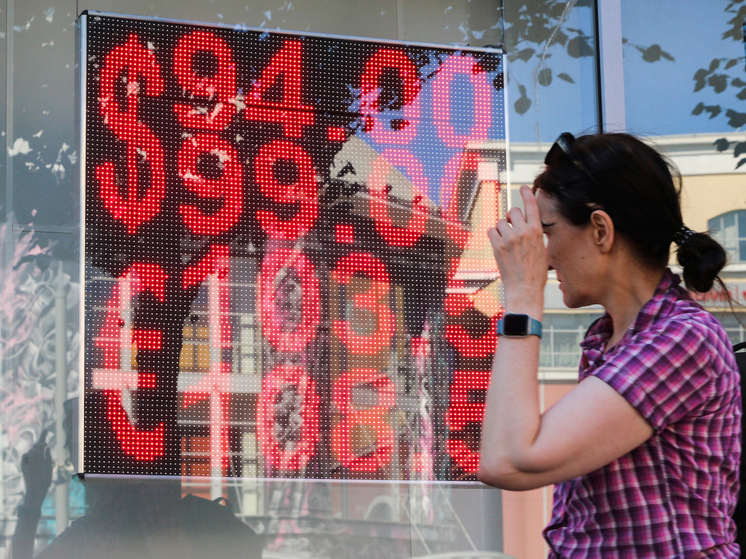However, it is unclear how to stop the trend of strengthening the exchange rate
Events around the Russian currency are becoming increasingly intriguing. On the one hand, the ruble is strengthening uncontrollably: on August 6, the Central Bank set the official dollar exchange rate at 84.9. At the same time, the Ministry of Finance, which desperately needs to fill the budget and fulfill its spending obligations, decided to reduce currency purchases in August by almost five times. This step is seen as a new factor in strengthening the ruble — in addition to the problem with cross-border payments for imports.

In July, the Ministry of Finance spent 5.5 billion rubles daily to purchase yuan under the budget rule, but now, from August 7 to September 5, the volume of transactions will be slightly more than 1 billion rubles. Let us recall that every time the state increased its purchases of currency, it stimulated demand for it and the ruble exchange rate lost ground against the dollar and the euro, which made it easier to fill both the federal treasury and the country's main «piggy bank» — the National Welfare Fund. And now the opposite situation may arise.
In addition, Siluanov's department is seeing growing expenses on repaying domestic debt: according to forecasts, in 2024 they will amount to 1.3% of GDP (2.4 trillion rubles), in 2025 — 1.5% of GDP (2.9 trillion), in 2026 — 1.7% of GDP (3.4 trillion). And the more cheap rubles the Ministry of Finance has at its disposal, the easier it will be for it to plug various kinds of «holes».
There is no universal answer to the question «Why is the ruble strengthening?» We have to talk about a combination of many circumstances — both tactical and regulatory, as well as macroeconomic. For example, the tax period could have played a certain role recently, when exporters convert foreign currency earnings into rubles to pay taxes to the budget, which increases the demand for them and, as a result, the cost. We must not forget about the traditional effect of raising the key rate of the Central Bank (a purely monetary measure): loans become more expensive, and accordingly, the money supply circulating in the economy increases in price. Plus, against the background of growing deposit rates in rubles, consumer demand for cash dollars and euros is decreasing.
Well, and most importantly: imports are decreasing (in the first half of 2024 — by $13.8 billion), foreign banks — in China, Turkey, the UAE — are blocking payments from Russian importers for fear of falling under secondary sanctions from the United States.
«The Finance Ministry's decision to reduce currency purchases by five times in August cannot but affect the situation with the ruble exchange rate,» says Igor Nikolaev, chief researcher at the Institute of Economics of the Russian Academy of Sciences. «It turns out that the currency is not needed, since the demand for it is so small. According to the laws of the market, the lower the demand, the lower the price. And I have no explanation for why the financial department took this step. After all, according to the scenario conditions for the development of the Russian economy published back in April, the average annual dollar exchange rate in 2024 should be 94.7 rubles. This figure is the basis for the forecast, according to which the budget for the next three years will be adopted. Spending commitments must be fulfilled, which is extremely difficult at the current exchange rate.»
In Russia, the demand for currency from importers is falling (they physically cannot pay foreign suppliers with it), and now it turns out that the state is also refusing it, Nikolaev reasons. But in the opinion of financial adviser, author of the project «Economism» Alexey Krichevsky, today there are no objective reasons for seriously adjusting the exchange rate: oil is sold at prices acceptable to the budget, import-export flows are quite stable. If the state had serious problems with financing the treasury, it would not have allowed the ruble to strengthen over the past four months — from 95 to 85 per dollar, with the exception of the abnormal jump after the introduction of sanctions against the Moscow Exchange.
«The main reason for what is happening, in addition to the high key rate of the Central Bank, was the situation with foreign trade settlements, — says the head of the department for work with wealthy clients of Fontvielle Investment Company Sergey Solovykh. — Since exporters are the main sellers of foreign currency on the market, and importers are buyers, any change in the balance of the foreign trade account is reflected in currency pairs. The fair ruble to dollar exchange rate is in the range of 90-95. It allows the budget to be steadily filled with money from exporting companies, it does not slow down the development of business in the country, and finally, it is calmly perceived by the population, unlike three-digit indicators.»
The fact that over the past month and a bit, regulators have increased the rate of mandatory sale of foreign currency earnings from 80% to 40%, indicates the desire of the authorities to return the rate to the 90-95 corridor. It is quite possible, Solovykh summarizes, that this decree will soon be canceled altogether.


